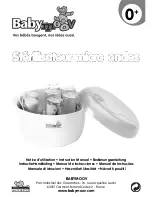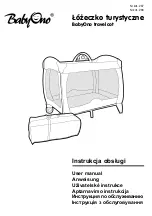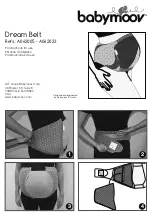
1.3 Remove the protective film from the inner visor on the side in contact with the
visor.
1.4 Rest one side of the inner visor onto one of the visor pins and hold it in position,
see Fig. 14.
1.5 Widen the visor and fasten the other side of the inner visor to the second pin,
see Fig. 15.
1.6 Release the visor.
1.7 Remove the second protective film from the inner visor and check that the inner
visor profile adheres to the visor.
1.8 Fix the visor onto the helmet.
CHECKING AND ADJUSTING THE INNER VISOR AIR DRAUGHT
Check for correct system fitting, by opening and closing the visor and check that
both visors are correctly fastened and do not move.
If the inner visor is not tightly fixed to the visor, move the external adjustment levers
simultaneously upwards to increase the air draught (Fig. 16). This operation must be
carried out gradually. The maximum air draught is achieved when the external levers
for the pin adjustment are turned outwards.
WARNING!!!
The presence of dust between the visors can produce scratches on both surfaces.
Scratched visors and inner visors may cause reduced visibility and must therefore be
changed.
Regularly check the correct air draught of the inner visor to prevent the same from
moving and scratching both surfaces.
If the helmet visor fogs up and/or condensation forms between the visors, check
both for system correct fitting and air draught.
An excessive and early air draught of the inner visor may result in excessive adhe-
rence against visor surface and/or permanent deformations with subsequent inabili-
ty to perform following adjustments correctly.
The extended use in special weather conditions may reduce system performance
and result in partial fogging and problems of condensation on the inner visor. In
this case, remove the inner visor from the helmet visor and dry it with dry and luke-
warm air.
Intense sweating /breathing, the use under particular weather conditions (low tempe-
ratures, and/or high humidity and/or sudden changes in temperature or heavy rain)
and intense and prolonged use may affect the performance of the system and cause
the fogging or formation of condensation on the inner visor.
In such cases, after using the helmet and to restore the system efficiency, remove the
inner visor from the helmet visor and let it dry with dry and lukewarm air. The same
procedure must be applied to the helmet, in order to dry out humidity in case it has
formed up as a consequence of the conditions described above.
20
Содержание X-402 T
Страница 82: ...82 ...
Страница 83: ...83 EÏÏËvÈÎ ÈÎ A ...
Страница 87: ... 87 10 9 8 30 C max ...
Страница 92: ...Fig 1 Fig 2 Fig 3 B1 B2 B1 B2 A1 B2 B2 A2 Fig 4 Fig 5 A ...
Страница 93: ...Fig 6 Fig 8 Fig 7 Fig 9 Fig 10 Fig 11 ...
Страница 94: ...MIN MAX Fig 14 Fig 15 Fig 16 Fig 13 Fig 12A Fig 12B Fig 12C ...
Страница 95: ...Fig 20 Fig 19 A B Fig 18 B A Fig 21 Fig 17 A B P J ...
















































